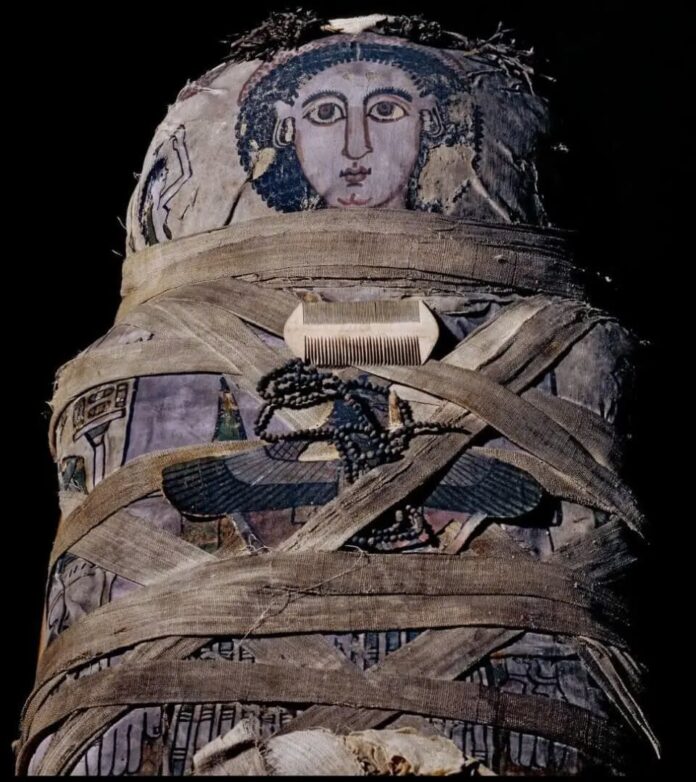A Young Life Preserved in Time

In the halls of the British Museum lies a fascinating relic from ancient Egypt – the mummy of a young woman named Cleopatra. This isn’t the famous queen we often associate with the name, but rather a 17-year-old girl who lived during the Roman Period of Egypt, around 100-120 CE.
A Noble Lineage

Cleopatra was no ordinary citizen. Inscriptions reveal she was the daughter of Candace, a member of the prestigious Cornelius Pollius family. Her father held the esteemed position of Archon of Thebes during Emperor Trajan’s rule, placing her firmly within the upper echelons of society.
A Life Cut Short
Tragically, Cleopatra’s life ended at the tender age of 17 years, 1 month, and 25 days. While the cause of her untimely death remains a mystery, such young departures were not uncommon in the ancient world.
Bridging Cultures in Death
A Greek Name, Egyptian Rites

Despite her Greek name and living under Roman rule, Cleopatra’s mummification process speaks volumes about the enduring Egyptian traditions. Her beautifully wrapped linen features imagery of beloved Egyptian deities – Isis, Nepthys, Anubis, and the Goddess Nut. This showcases how Egyptians clung to their beliefs even as Mediterranean culture evolved under Roman influence.
Treasures for the Afterlife
Discovered in Sheikh Abd el-Qurna, Thebes, Cleopatra’s mummy was accompanied by touching offerings: a string of berries, a garland or wreath, and a wooden comb – items to accompany her into the afterlife.
A Window into Ancient Medical Knowledge
X-Ray Revelations

Modern technology allows us to peer beneath the bandages, revealing fascinating details:
- Dense material, likely plaster, obscures much of the body.
- The ribs, arms, and legs show no signs of fractures.
- An unidentified mass is present in the body cavity.
- The arms are extended, with palms resting against the outer thighs.
- A dislocated left hip, possibly due to tight bandaging.
- No evidence of arrested growth is visible.

Cleopatra’s mummy, cataloged as EA6707 in the British Museum, continues to captivate visitors and researchers alike. It stands as a testament to the complex interplay of cultures in Roman-era Egypt and the enduring human desire to preserve our loved ones for eternity.

